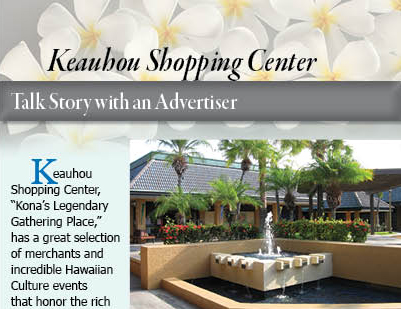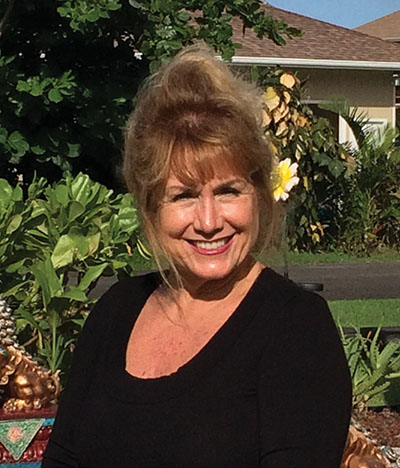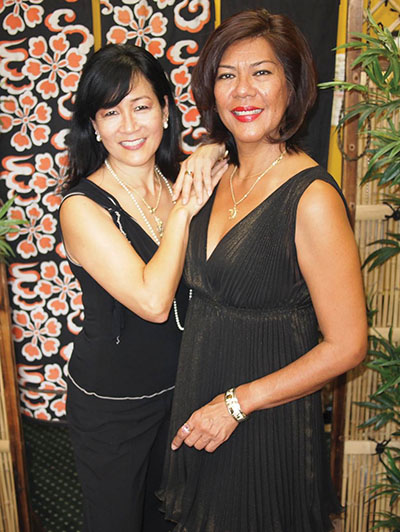Then & Now: Hilo Sugar Mill/Wainaku Center
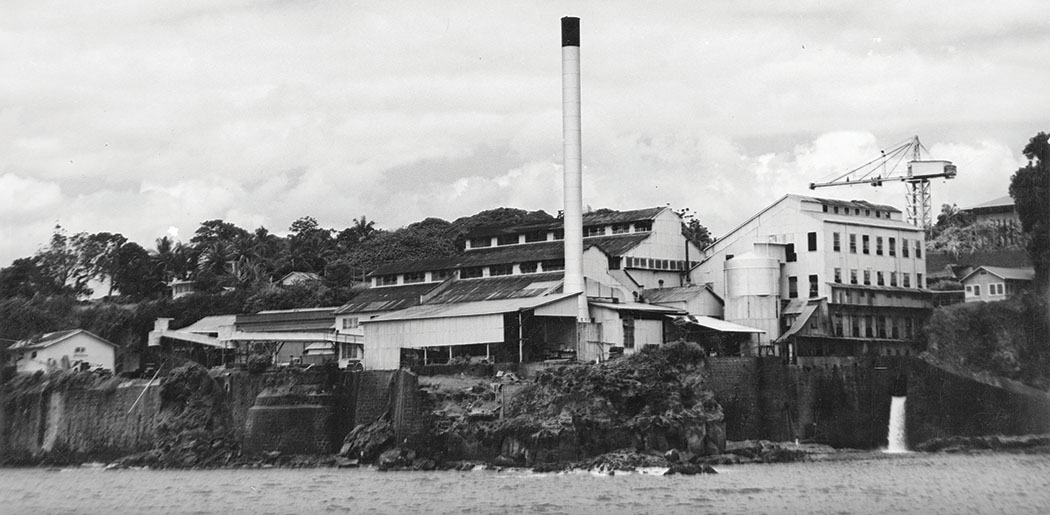 By Denise Laitinen
By Denise Laitinen
Situated on the sea cliffs just north of Hilo and tucked behind old concrete walls is the former Hilo Sugar Mill, which in its heyday processed 1,400 tons of sugar a day. Now, surrounded by tropical flowers and manicured lawns, the Wainaku Executive Center sits like a crown jewel overlooking Hilo Bay. Many newcomers and Hawai‘i Island visitors drive past the ornate metal gate entrance as they head north from Hilo on Māmalahoa Highway, not realizing what lies beyond the gate.
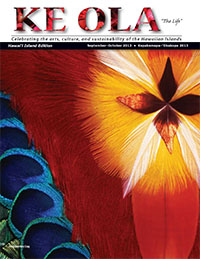
Hilo Sugar Mill was a vital part of the community, providing jobs and housing for hundreds of workers brought in from countries such as China, Japan, the Philippines, and Portugal.
The mill serves as a mirror of Hilo’s evolution: from the plantation era when sugar was king, to falling into ruin after the sugar industry’s demise, and revitalization in a new economy.
Today the former mill site has been transformed into a 12-acre oceanfront executive center with 3,000 feet of shoreline (including a massive rock retaining wall built by the sugar company in 1920), and grounds that include an amphitheater and outdoor lānai. Remnants of the mill dot the landscape and serve as a testament to the importance of the property’s former role. The interior of the two-story building is equally impressive with its wide koa wood staircase, floor-to-ceiling windows, and executive boardroom.
The Wainaku Center is more akin to a phoenix rising from the ashes than royal jewelry.
Perhaps no other industry has impacted Hawai‘i’s history, culture, landscape, and language as much as sugar. Although early Polynesian settlers brought sugar cane with them to the Hawaiian Islands, the crop itself took off in the 19th century with the influx of western businessmen.
In 1884, Hawai‘i Island was home to 24,991 residents and more than 30 sugar plantations, many of which were in East Hawai‘i. With demand far outweighing the available workforce, thousands of workers were imported, usually from Asia, to work the cane fields. According to an 1897 report from the Secretary of the Bureau of Immigration, Hawai‘i Island had 9,680 sugar plantation laborers—more than any other island in the state. The workers were a diverse lot: 425 were Hawaiian; 952 were Portuguese; 5,021 were Japanese; 2,995 were Chinese; with 20 South Sea Islanders, and 267 others.
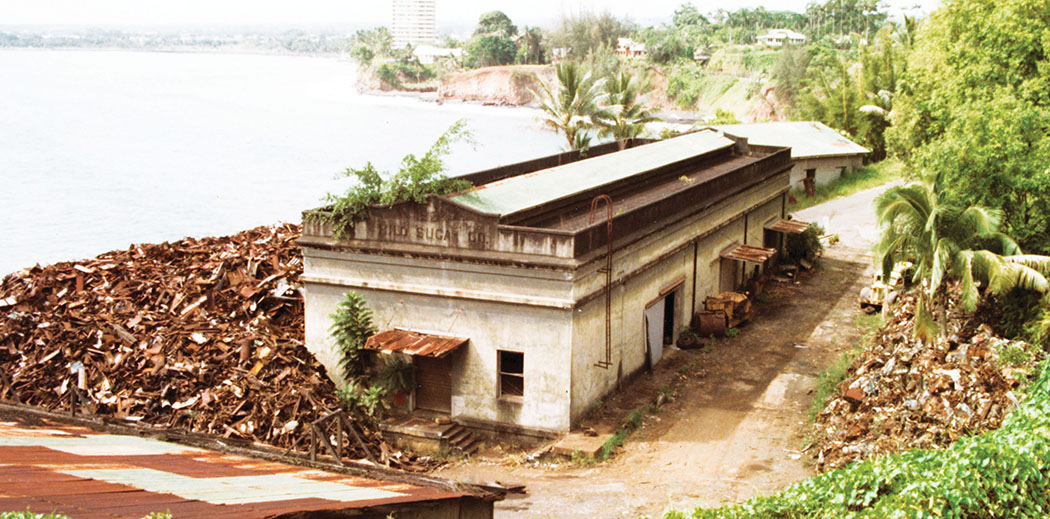
1884 was also the same year that Hilo Sugar Company purchased Spencer Plantation, a large sugar cane operation just north of Hilo that had been in operation since the 1860s. Over the decades, Hilo Sugar Mill, which was owned by Hilo Sugar Company, grew as it purchased nearby smaller mills and plantations, including the Hawaii Mill Company at Ponahawai. In time, the mill included several buildings, including the mill itself, a boiler room, auto and truck repair shop, supply warehouse, and administrative offices.
As technology improved and production increased, the amount of sugar cane the plantation grew and produced also increased. In 1887, Hilo Sugar Mill was producing 3,500 tons of sugar a year, whereas by 1948 it was producing 1,400 tons of sugar a day.
The sugar company was able to produce so much sugar because it owned vast tracts of land on which it grew sugar cane. In 1938, Hilo Sugar Company owned 4,051 acres of land on Hawai‘i Island and leased an additional 3,720 acres.
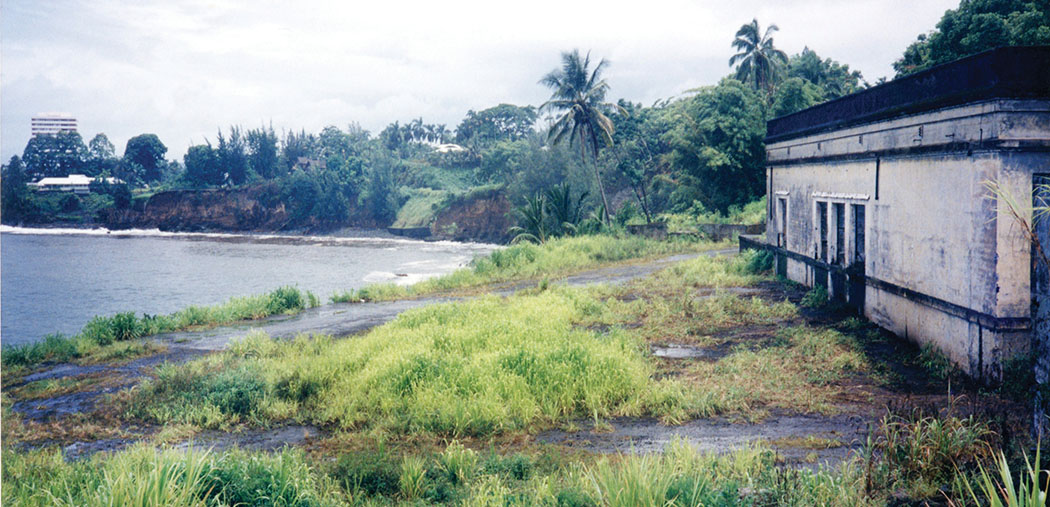
That required transporting the sugar from the fields to the mill, as well as creating a system of conveying water for growing the crops and processing. By 1938, Hilo Sugar Mill had built 52 miles of permanent water flumes and 15 miles of portable flumes.
The concrete-lined ditches carried water from the uplands to crops and provided a way to float the cane downstream to the mill. You can still see the Hilo Sugar Mill flume running across Māmalahoa Highway in Wainaku about a half mile north of the Wailuku River.
Growing up in Pāpa‘ikou in the 1930s and 1940s, 82-year-old Michio Oyakawa recalls how he and his friends used to pluck cane from the flumes and suck on the sugar cane.
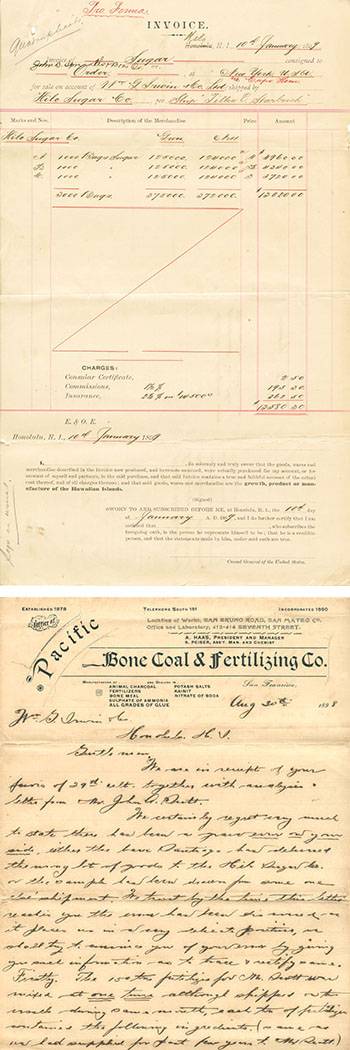
“The mill was down by the seashore and the fields were up in the hills,” explains Michio, who currently lives in California.
“We would sit by the side of the flume and watch the cane go by. If we saw a juicy piece of cane we would pluck it out of the flume and suck out the sugar. A lot of us had very bad teeth as a result. There weren’t a whole lot of dentists around then. We had to go into Hilo. It was terrible; there wasn’t anesthesia back then.”
Caryn Mine, who grew up in Wainaku in the 1960s also remembers the flumes.
“In some areas people would jump into the flume and swim or ride the flume,” says Caryn. “I always remember being told by my mother not to go into the flume, that it was too dangerous.”
The sugar company built more than just operational facilities and flumes. Like other plantations of its time, Hilo Sugar Company built housing and recreational buildings for its workers, even creating a dairy in order to provide milk to workers.
A 1920 annual report, written by Hilo Sugar Company Manager John Scott, notes that the sugar company was in the midst of building a dairy above the cane fields in order to provide “an adequate and good milk supply” to its employees, estimating it would eventually need to provide 1,000 quarts of milk a day.
The same report also mentions that during 1920, the company built 12 four-room cottages for laborers, 4 six-room houses for supervisors, and a bungalow cottage for a skilled employee. Many of the homes built during those times can still be seen today in the Wainaku and Kaiwiki areas.
As was the case elsewhere, workers were housed according to ethnicity.
“All the Portuguese [people] lived near each other,” says Caryn.
“All the Japanese [people] lived near each other and there was one general store. It was a small, close knit community.”
Caryn’s family moved to Wainaku from Hakalau in the mid-1960s when she was in the second grade after her father took a job with the American Red Cross in Hilo. Caryn recalls that in those days the “whole area was surrounded by cane fields.”
And although Wainaku is only a mile from Hilo, the two areas were worlds apart. “Even though Wainaku is close to Hilo, once you go across the [Wailuku River] ‘singing bridge,’ you’re in the country,” says Caryn.
“Wherever there wasn’t a house, there was a field of sugar cane. The mentality was that they would never get rid of the sugar mills.”
Indeed, by the mid-1960s, Hilo Sugar Mill and its parent company had done nothing but grow. In 1947, Hilo Sugar Company had formed a subsidiary in California called Hilo Sugar Plantation Co. In December 1955, the two companies merged and became known as Hilo Sugar Company Ltd. A decade later, in July 1965, Hilo Sugar Company merged with Onomea Sugar Company and became Mauna Kea Sugar Company.

Sugar was king and it seemed it would reign forever.
“When I was growing up I don’t remember kids talking about life outside the mill,” says Caryn. “The mentality was that kids would grow up and go to work in the mill. There wasn’t much talk of going to college. When I was young, I thought the only place that sugar came from was Hawai‘i,” adds Caryn. “I didn’t realize sugar came from anywhere else in the world. That was my reality.”
Reality came to a crashing halt in December 1976 when the mill shut down.
By the 1970s, competition from foreign markets was heavily impacting Hawai‘i’s sugar cane industry. Mechanization reduced the need for workers. The global economy was changing. Mills started consolidating or closing.
In Hilo, those factors were compounded by the devastating tsunamis of 1946 and 1960 that had destroyed businesses and homes, as well as the railroad system that delivered sugar cane from the fields to the mills and harbors.
“I don’t think it sunk in with a lot of people when the mills starting closing,” says Caryn. “When one mill closed they moved to another mill.” When the island’s last mill closed, there was nowhere else to go, and many had to search for a new line of work or move off island.
Hilo Sugar Mill itself spent the next two decades falling into disrepair and ruin.
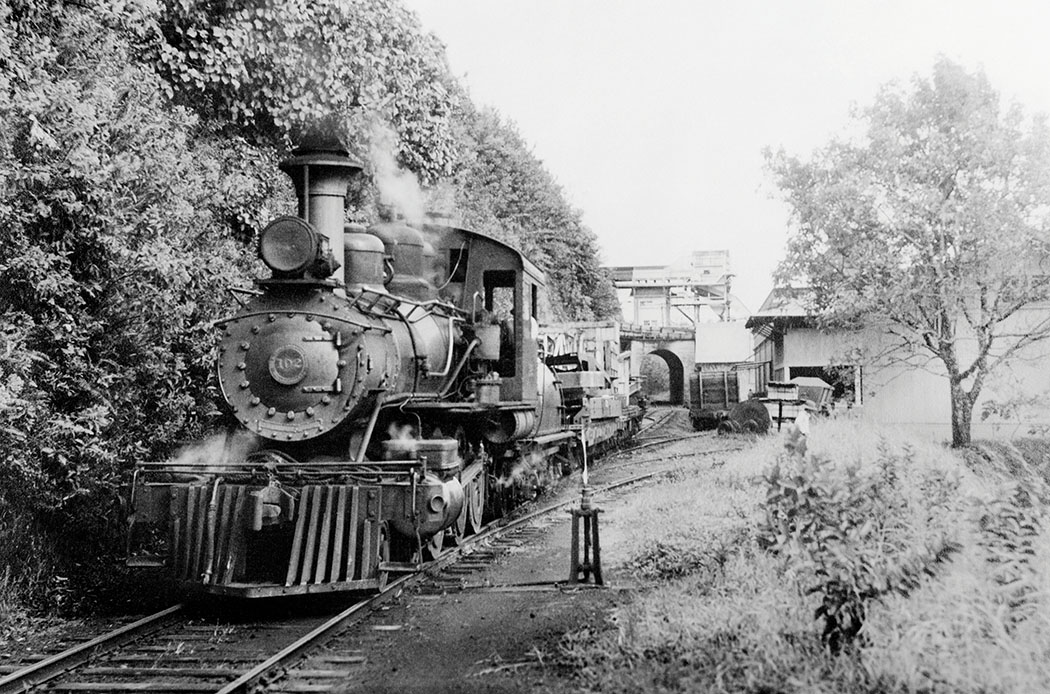
“It was basically a dilapidated piece of land that had rusted metal on it,” says Andrew Hara, art director and managing archivist for Edmund C. Olson Trust II.
“The steel and metal was removed from the site during the 1970s,” says Andrew, adding, “the concrete foundation was sitting there for about 20 years.”
In 1996, C. Brewer & Co., one of the “Big 5” sugar companies in Hawai‘i, bought the rundown mill with the intent of renovating the property and using it as its corporate headquarters after it moved its operations from Honolulu to Hilo. (In addition to growing sugar, C. Brewer owned the Mauna Loa Macadamia Nut Company and other specialty food companies, related agribusiness interests, and real estate.)
C. Brewer & Co. renovated a former warehouse, which had been built in 1924, and turned it into a two-story 11,800-square foot business center. Renovations included an expansive staircase made of koa wood harvested from the Hāmākua Coast, as well as a large executive boardroom with koa flooring, wainscoting, and ceiling. A second story lānai was built on the ocean side of the building, providing commanding views of Hilo Bay.
The building’s new career as corporate headquarters wouldn’t last long. Less than five years after renovating the building, C. Brewer & Co. dissolved in 2001. Undeterred, C. Brewer’s chairman, John W.A. “Doc” Buyers, bought the property for a reported $3.5 million with the intent of turning it into a resort. Unfortunately, Buyers became ill a few years later and died in 2006 before implementing his vision for the property.
After Buyers’ death, office space within the renovated center was leased out to different organizations, including the University of Hawai‘i at Hilo College of Pharmacy program.
The property was put up for sale in 2010 and languished on the market for two years before a new owner with a new vision came along.
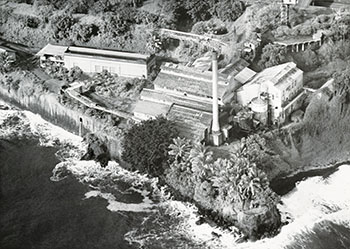
In 2012, Wainaku Ventures LLC, whose principal is the Edmund C. Olson Trust II, bought the 12-acre property for $7.7 million. Focusing on sustainable agriculture, natural resource conservation, community development, and renewable energy, the Trust owns more than 15,650 acres of agricultural and conservation lands on Hawai‘i Island and O‘ahu. Its operations include Ka‘ū Coffee Mill, Big Island Eco Tours, Hamakua Macadamia Nut Company, and OK Farms, among others.
Trust President Ed Olson’s plans for the property include using it as an event venue, convention center, and art gallery. After purchasing the property, the Trust quickly set about improving the grounds and landscaping, as well as making interior improvements, including the addition of extra bathrooms.
And it didn’t forget the past. During the renovation process, Andrew realized that boxes of old materials related to the mill’s earliest days were sitting in dumpsters. Staff of the Edmund Olson Trust Archive, which is based at the Trust’s headquarters in the old Onomea Sugar Plantation office in Pāpa‘ikou, spent months restoring historical documents pertaining to the mill and plantation life. Today, the Trust’s Archive and Gallery features employee records, maps, financial transactions, reports, and other material documenting the sugar industry on island. The Trust has partnered with the Hawaii Plantation Museum, also located in Pāpa‘ikou, to showcase displays of plantation life in Hawai‘i.
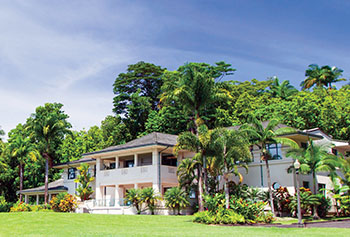
In addition to honoring the past, the Trust is moving forward as the Wainaku Executive Center enters a new phase of life. One of the most prime oceanfront locations in Hilo, the property is frequently used as a wedding venue, as well as for conferences and private parties. In June it hosted the first-ever Hilo Beer Festival.
A key part of the Center’s charm is the various remnants of the sugar mill scattered around the property, including a tall concrete tunnel used by the sugarcane trains. For decades, sugar was carried across the highway on an elevated bridge that led to the top of the tunnel, where it was unloaded into trucks.
Since the Trust owns a parcel of land mauka of the highway, Olson plans to create a parking area on the mauka side with guests walking or taking golf carts across the bridge. Plans are also in the works for a restaurant and coffee shop, featuring coffee from Ka‘ū Coffee Mill, one of the Trusts’ other ventures. ❖
For more information:
Edmund Olson Archive Trust: OlsonTrust.com
Hawaii Plantation Museum: MemoriesOfHawaiiBigIsland.com
Contact writer Denise Laitinen: wahineokekai@yahoo.com
